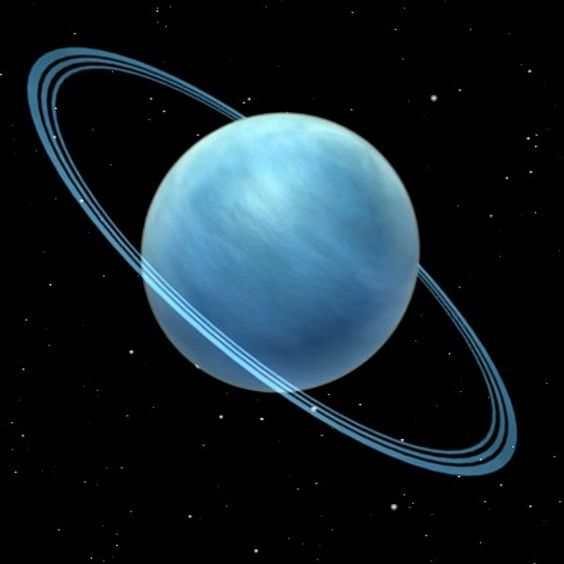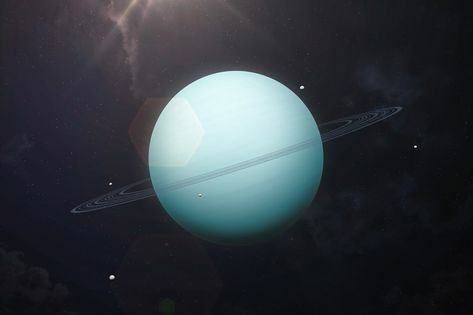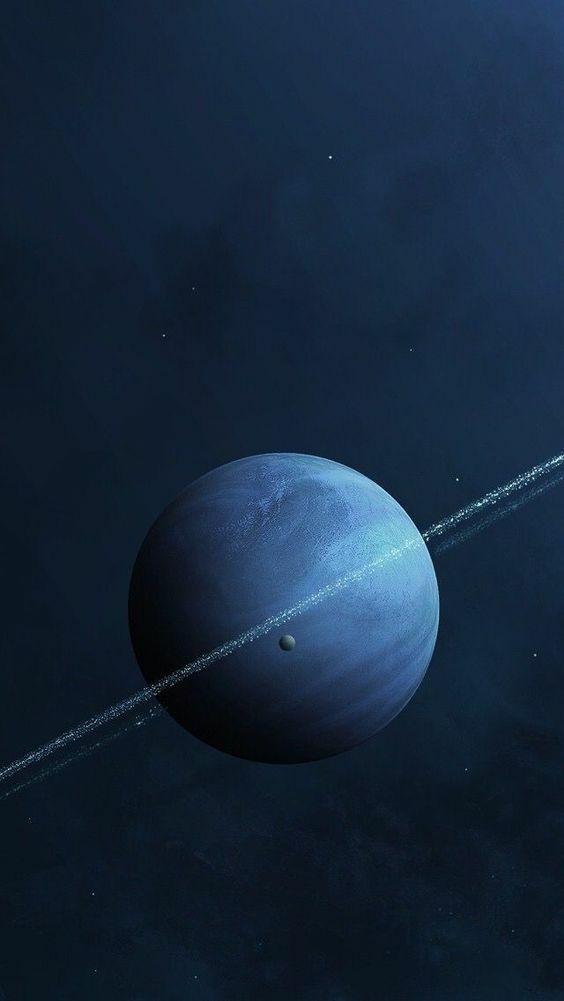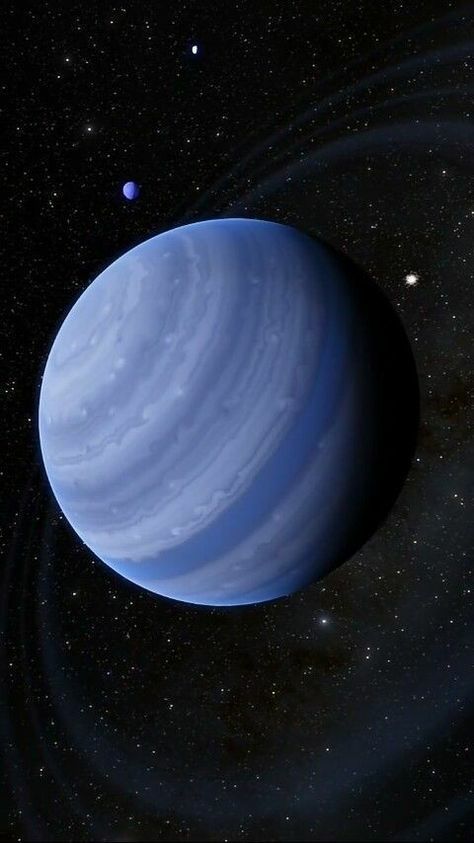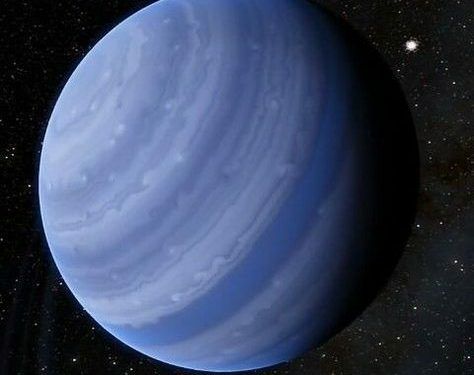Uranus.
Uranus is the seventh planet from the sun and the third-largest planet in our solar system. It was discovered by Sir William Herschel in 1781, making it the first planet to be discovered with the use of a telescope. Uranus is known as an ice giant because it is composed mostly of hydrogen and helium, along with water, methane, and ammonia ices.
Uranus is a blue-green planet with a diameter of 31,518 miles (50,724 kilometers) and a mass about 14.5 times that of Earth. Its atmosphere is mostly composed of hydrogen and helium with small amounts of methane and traces of other hydrocarbons. The methane in its atmosphere is responsible for its blue-green color. Uranus rotates on its side, with its axis tilted at an angle of 98 degrees, causing it to have extreme seasons that last about 20 Earth years each.
Uranus has 27 known moons, the largest of which are Titania, Oberon, Umbriel, Ariel, and Miranda. These moons are believed to be made up of a mix of rock and ice, and they range in size from just 11 miles (18 kilometers) in diameter to more than 950 miles (1,530 kilometers) in diameter. Uranus also has a system of faint rings that were discovered in 1977 by astronomers James Elliot, Edward Dunham, and Jessica Mink.
Uranus has been visited by only one spacecraft, NASA’s Voyager 2, which flew by the planet in 1986. During its close encounter with Uranus, Voyager 2 discovered 10 new moons and made detailed observations of the planet’s atmosphere, rings, and magnetic field. Since then, there have been no other missions to Uranus, but there are plans for future exploration. The European Space Agency’s (ESA) proposed Uranus Pathfinder mission aims to send a probe to orbit Uranus and study its atmosphere, rings, and moons in detail.
Despite the data collected by Voyager 2, Uranus remains a mysterious and enigmatic planet. Its extreme tilt and unusual magnetic field are still not fully understood, and there are many unanswered questions about the planet’s composition and history. One of the most intriguing mysteries is the origin of Uranus’ tilt. Some scientists believe that Uranus was hit by a large object early in its history, causing it to tilt on its side. Others suggest that the planet’s moons played a role in tilting its axis.
Another mystery surrounding Uranus is the composition of its interior. Scientists believe that the planet has a rocky core surrounded by layers of ice and gas, but the exact structure and composition of these layers are still unknown.
Uranus is a fascinating and mysterious planet that continues to intrigue scientists and astronomers alike. Despite being discovered over two centuries ago, there is still much that is not understood about this ice giant. Future missions to Uranus, such as the proposed Uranus Pathfinder mission, may help to shed light on some of these mysteries and provide a better understanding of this distant planet.
Hits: 0
